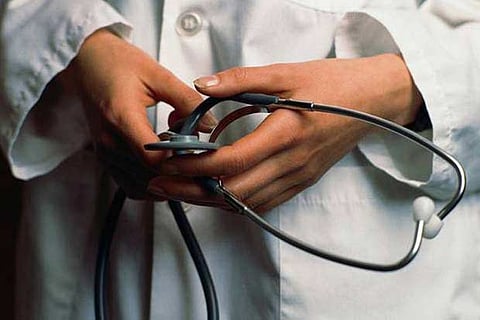

Chennai
Stating that ‘FAST’ stands for ‘Facial drooping, Arm weakness, Speech difficulties and Time to call emergency services’, Neurosurgeon Dr S Kumar, said, “These are the symptoms one needs to look out for, to identify his condition as a stroke. However, unlike in the case of heart attacks, public awareness about stroke remains low. This coupled with the absence of pain following a stroke event prevents prompt referrals.”
He said that a lot of efforts are being made by doctors and other stakeholders of the health industry to educate the public on the symptoms, but awareness continues to be severely lacking. One of the main reasons why the burden of death due to stroke is extremely high in the country, is this lack of awareness, he added. While every 1 in 10,000 persons suffers from stroke, barely 10 per cent of the patients tend to reach the hospital within the golden hour – which is the first four hours since the brain attack.
Stressing on the importance of treatment during the golden hour, Dr R M Bhupathy, Head of the Neurology Department at the Government Multi Super Specialty Hospital at Omandurar Estate, said, “It is important that the patient be brought to hospital during the golden hour, during which time, we identify the type of stroke he is suffering from. We administer treatment based on the condition of the patient.”
He explains, “Someone who has recognised the symptoms has to rush the person to the nearby stroke centre. In case of a stroke, after the blood flow is affected, millions of nerve cells die in the matter of minutes. After we cross the window period, reversal is very minimal and this leaves the person disabled and there is accelerated ageing.”
He also said that if the patient is suffering from stroke in evolution need or reverse the disease. “We give the patient the thrombolytic drug or clot busters as they are known and perform an angiography to find out whether it is a large vessel disease, a small vessel disease or a medium vessel. Based on that treatment is administered to the patient,” he stated, adding that it is important to re-establish the usual blood supply to the brain.
While the treatment is dependent on the kind of stroke the patient has suffered from, it is also important to consider the lifestyle diseases he has, the doctor said.
It may be noted that a stroke occurs when a blood vessel that carries oxygen and nutrients to the brain is either blocked by a clot or burst (ischemic or haemorrhagic, respectively).
If the patient is found to have experienced an ischemic stroke, which accounts for about 80 percent of all strokes, the on-board medical team initiates intravenous clot buster drugs. “The clot will be mechanically removed using a suction catheter or stent retriever after brought to the hospital if the patient shows no signs of recovery,” the doctor added.
Take stroke seriously
Visit news.dtnext.in to explore our interactive epaper!
Download the DT Next app for more exciting features!
Click here for iOS
Click here for Android